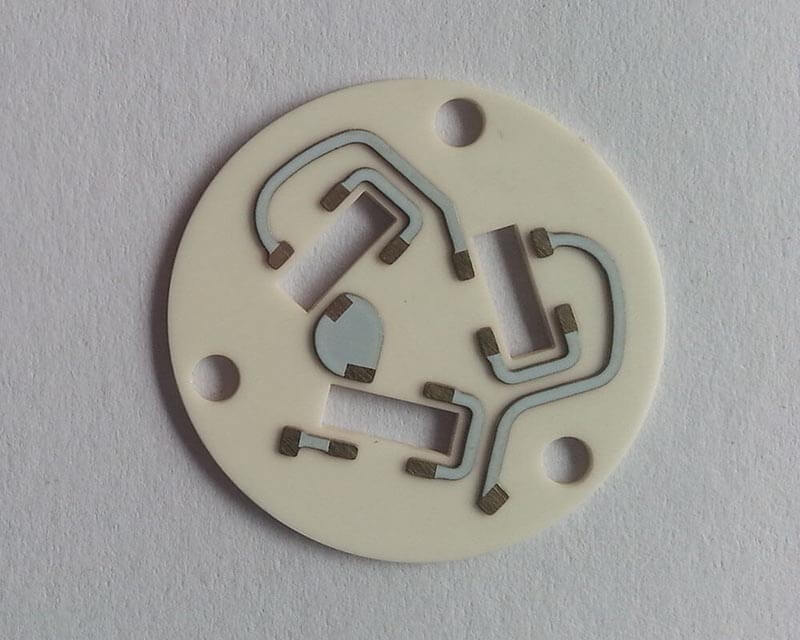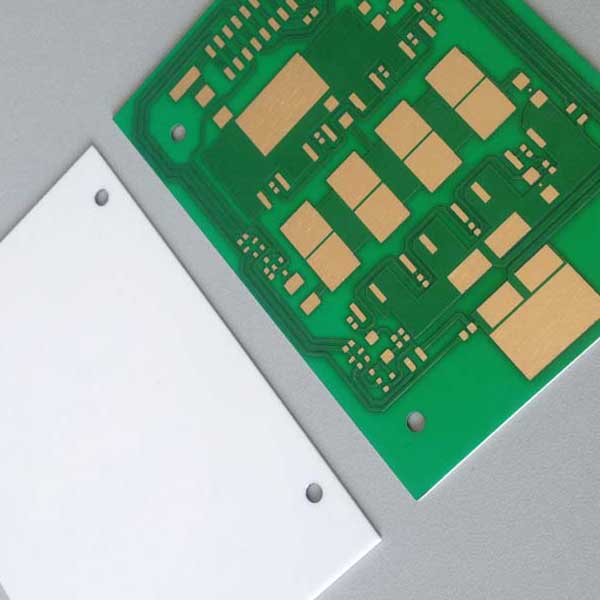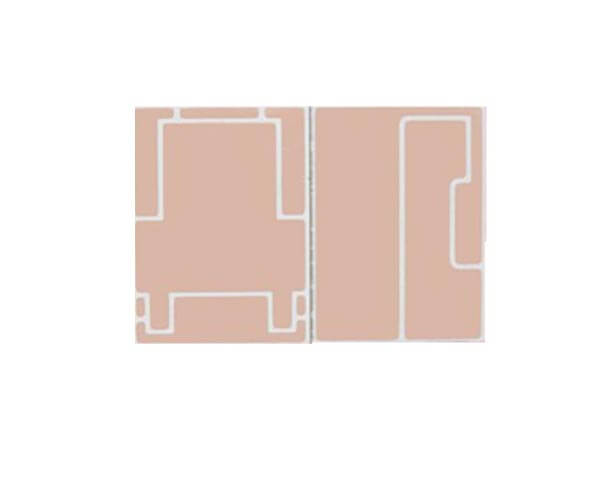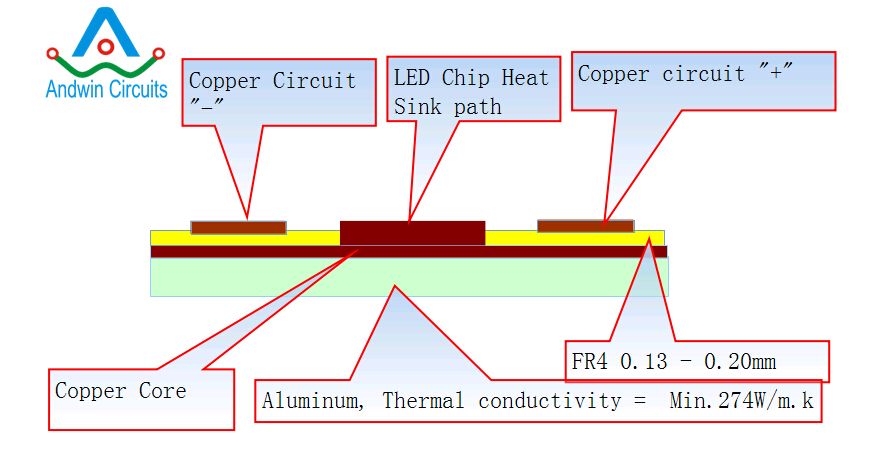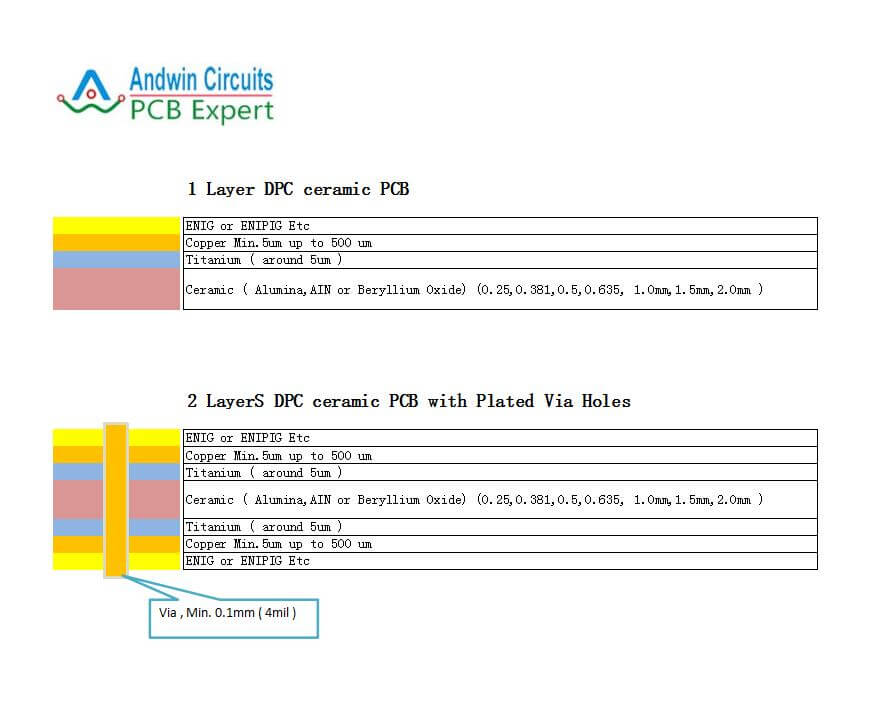
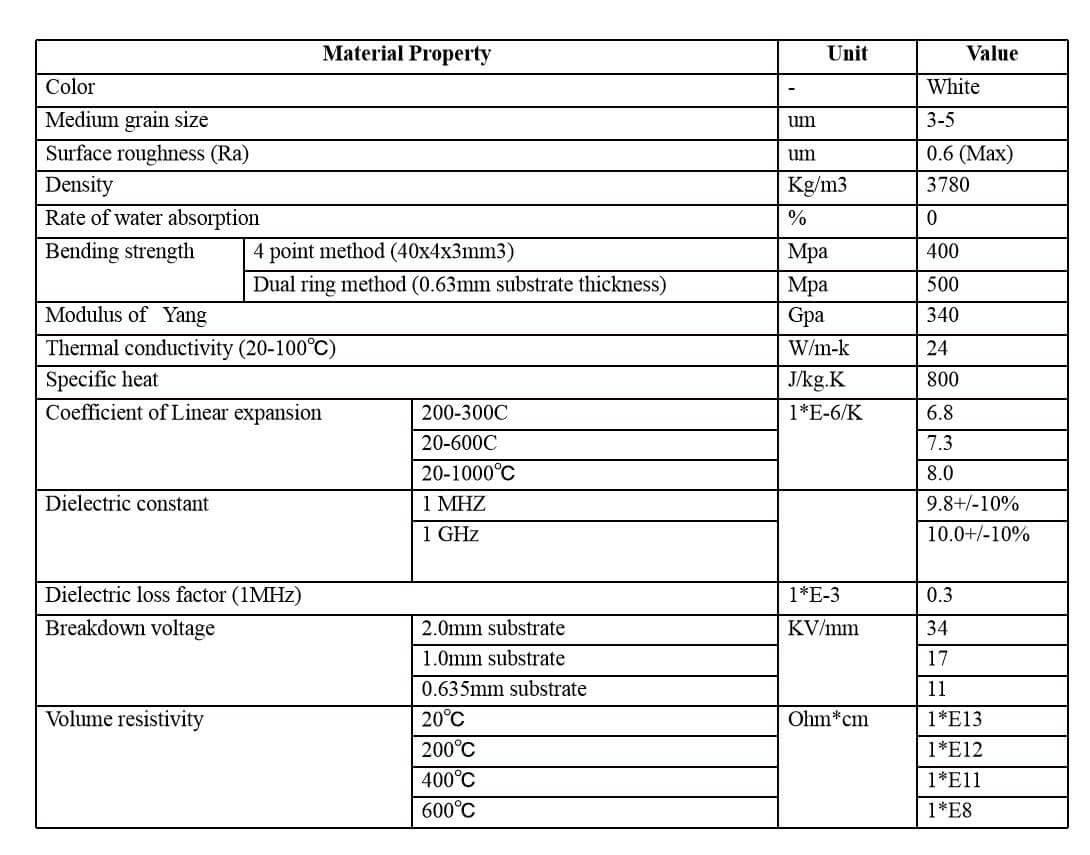
The Alumina PCB is made of three types of Alumina Oxide,
such as 96% Alumina substrate, 99.5% Alumina substrate, and 99.6% Alumina substrate.
Each of these is highly effective to make different devices worthy.
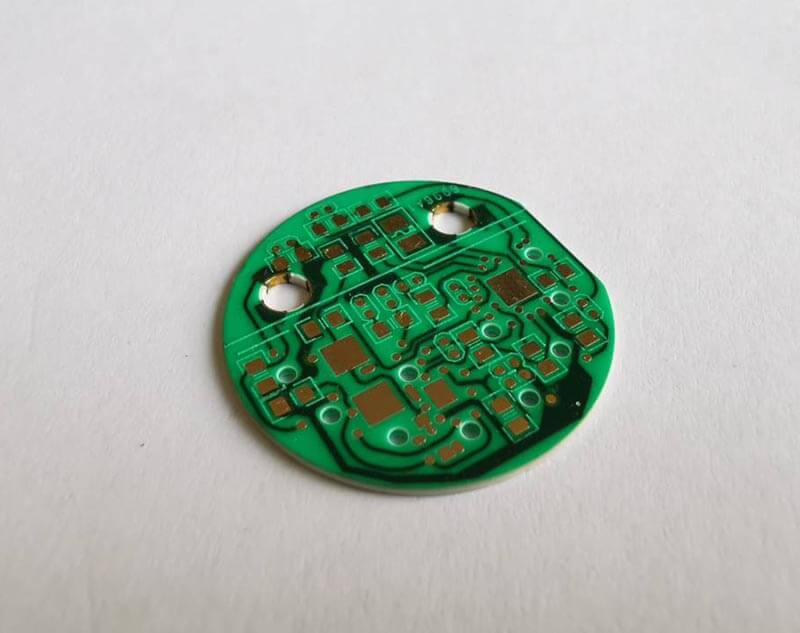
The 96% Alumina PCB substrate is a highly popular variant available in PCBs.
Most of the microelectronic applications require the Alumina PCB,
Because of the substrate materials.
The thick film substrate is the standard format required for these sorts of applications.
The 96% of Alumina substrate into the PCB is extensively used for building hybrid microelectronic circuits.
Due to the availability, minimal expanse, and high technical quality of 96% Alumina,
Makes it effective for making hybrid devices.
It also offers the best electrical insulating properties, mechanical power,
Good thermal conductivity, chemical resilience, and dimensional solidity.
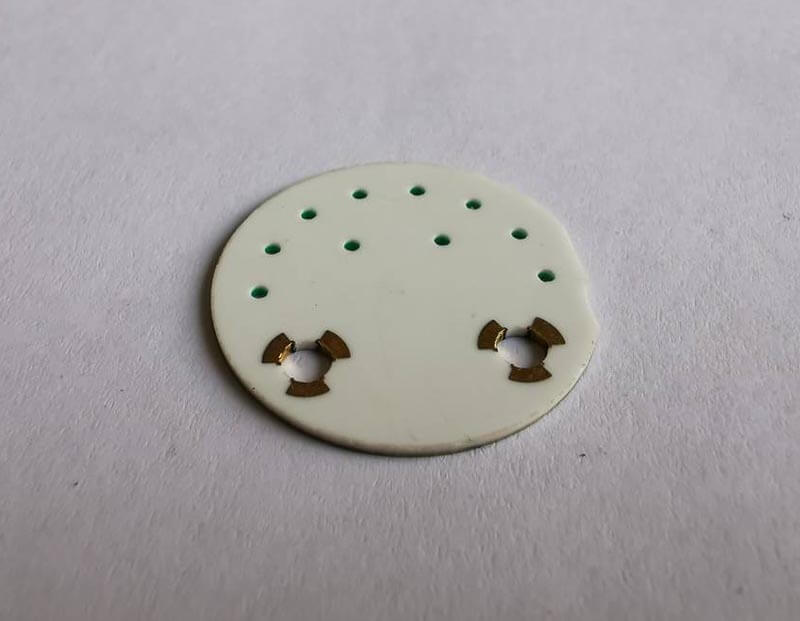
The 99.5% Alumina substrate is used in smaller grain size applications.
The applications that are not critical require this Alumina PCB.
The finish upon the surface of 99.5% has the ability to achieve a 2u-in max finish because it is a bit larger grain size.
The materials have less flexural strength, thermal conductivity, dielectrically strength as well as dielectric consistency.
One of the advantages is it can also be found in larger sizes and better thickness
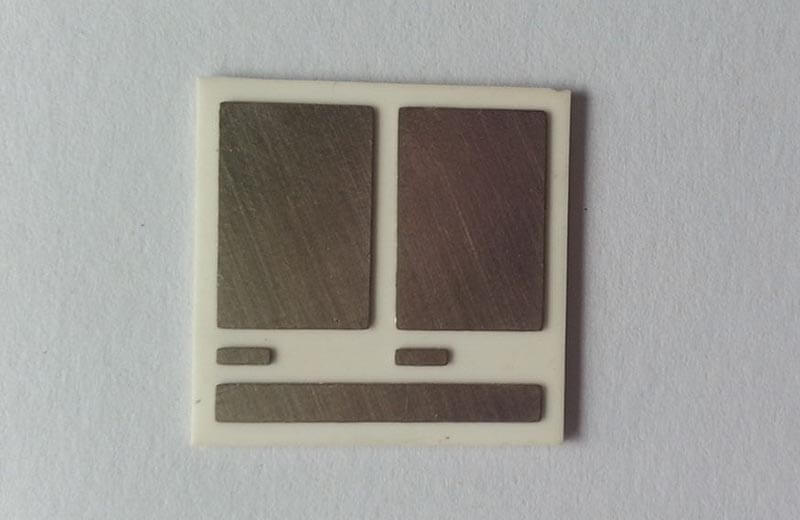
The 99.6% Alumina substrate is used for its standardized thin-film substrates.
It is best for using in sputtered, evaporated, and chemically vaporized deposited metals;
highly recommended in-circuit generation.
It has a high purity level and a smaller size grain enables the 99.6% Alumina to
provide a smoother outcome without fewer surface defects.
It obtains less than 1u-in. 99.6 Alumina surface roughness.
This indicates high mechanical performance,
low thermal conductivity, extra-ordinary electrical insulation,
good dielectric properties, and good corrosion that give the most wear-resistant.
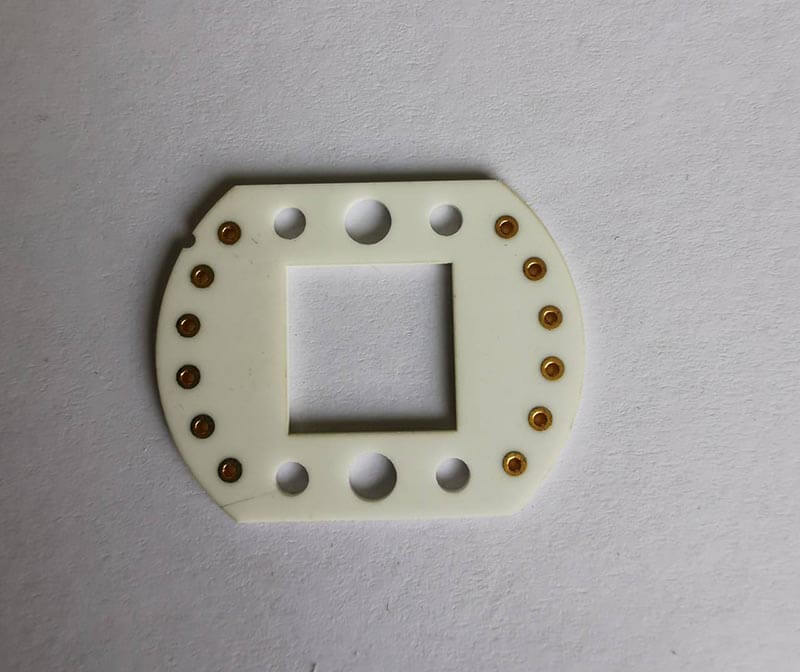
Alumina is one of the important materials used during the manufacturing of Printed Circuit Boards.
The properties of the Alumina PCB materials are unambiguously diverse compared to the other alternatives available in the market.
It is made of ceramic components and the material properties are quite different from metals or fire-resistant materials.
This creates a difference in the manufacturing of Alumina PCB than the others.
Hence, the application of ceramic or Alumina in the PCB industry has some specific purpose to serve.
Where the other PCBs do not fit well, Alumina is the perfect alternative to choose.
The material used in Alumina PCB is strong and rigid that provides significant support to the components.
For mounting on the surface of the PCB, this is a perfect substitute to add.
The performance is high enough compared to the competitors including the thermal conductivity of the materials.
Temperature consistency is much higher compared to other materials.
The only drawback it holds is that the material sometimes becomes expensive mostly than the other usual materials used.
This often happens when it is used for some inevitable high-grade devices.
The exceptional high-frequency performance and strong thermal dielectric with the low expansion is the reason that has made it the most common ceramic PCB and also the most demanding one. It is mostly used in the devices needed for cooling and heating, LED boards, medical circuits, sensor modules, and other high-frequency devices.
Alumina Oxide is the most used ceramic material in ceramic PCBs and packages.
Using low volume Alumina PCB is perfect for creating samples, prototypes, and small volume programs that will be helpful for upgrading and accelerating company development reducing budget.
On the other hand, the medium to high volume solutions can be effective to ensure the competitive pricing of the manufacturing process so that the companies can alter the footprint and supply chain solution according to the production volume.
The most upgrading advantages once can have by using Alumina PCBs are the following:
- Provides good electrical insulation
- Ensures moderate mechanical strength in the ceramic circuit boards
- Comes with excellent compressive strength
- The operating temperature is comparatively high which is 350¡C to 1500¡C
- Lower expansion coefficient (6-8 ppm/¡C) that leads to less stress on solder joints
- Better thermal possessions (22-24 W/mK)
- Greater performance in high-frequency applications
- The materials are hard enough to guarantee moderate thermal conductivity
- Alumina contributes to unmatched corrosion and wears resistance
- Provides outstanding gliding properties and also low density
- The package size becomes small because of the integration and possibilities in multilayer applications
- Hermetic packages enable 0% of water absorption
- Gives enough light reflection due to its white color contrast
- Outgassing is restricted
- Made of strong and rigid material that enhances durability
- The price of the metal is comparatively less than the others
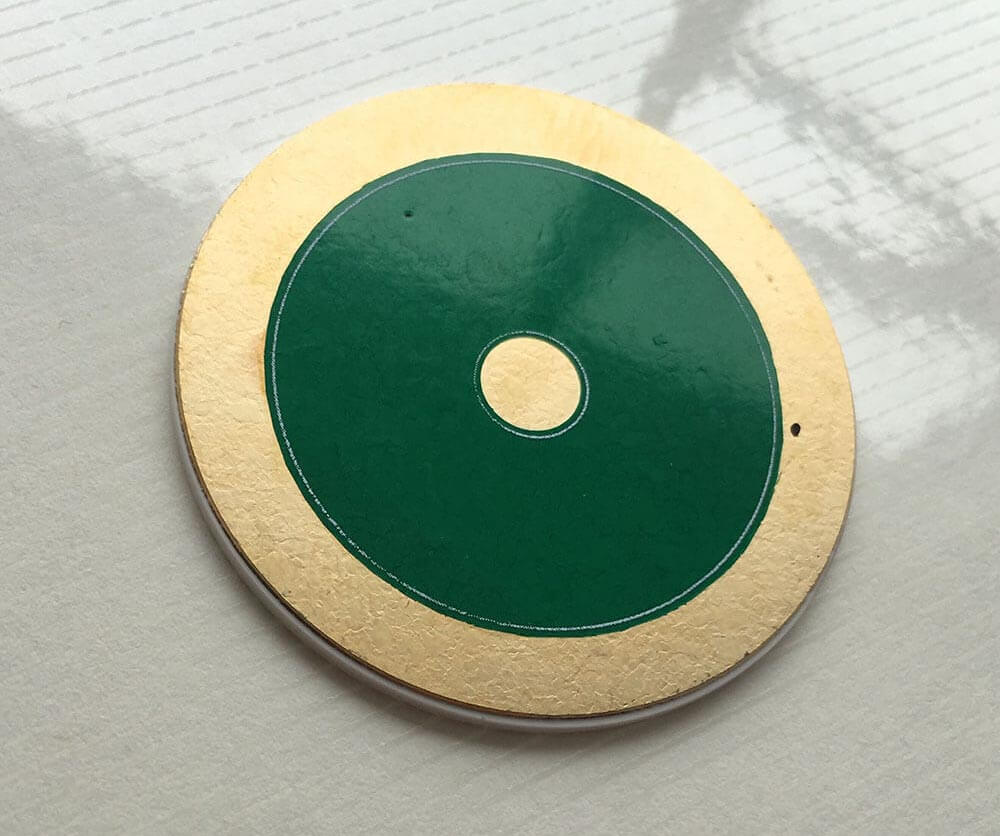
Alumina ceramic PCB application
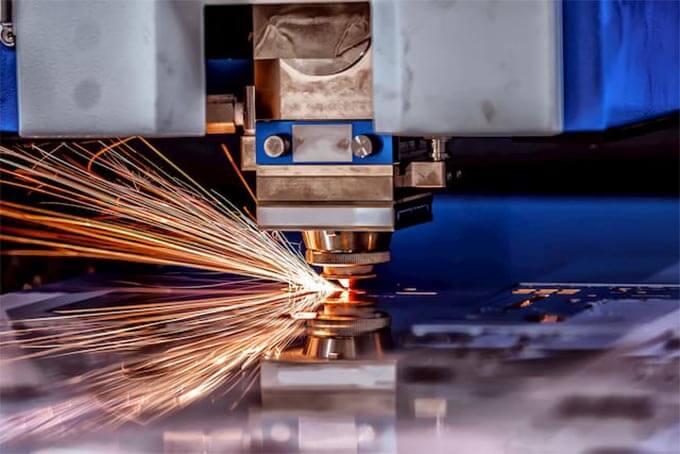
Only board with Rectrangle shape can be shipped via single piece, or via panel
Soldermask is also available upon request, working temperature >500 C,
and color is semi-transparent
For same stack up, cost lower than DBC Ceramic PCB, higher than MCPCB
The famous brand ceramic PCB customers

Western Digital Honeywell
Get professional thermal management solution by ceramic PCB from us!
Other PCB products, you may interesting

